【Azure API 管理】APIM如何实现对部分固定IP进行访问次数限制呢?如60秒10次请求
| 阿里云国内75折 回扣 微信号:monov8 |
| 阿里云国际,腾讯云国际,低至75折。AWS 93折 免费开户实名账号 代冲值 优惠多多 微信号:monov8 飞机:@monov6 |
问题描述
使用Azure API Management, 想对一些固定的IP地址进行访问次数的限制,如被限制的IP地址一分钟可以访问10次,而不被限制的IP地址则可以无限访问?
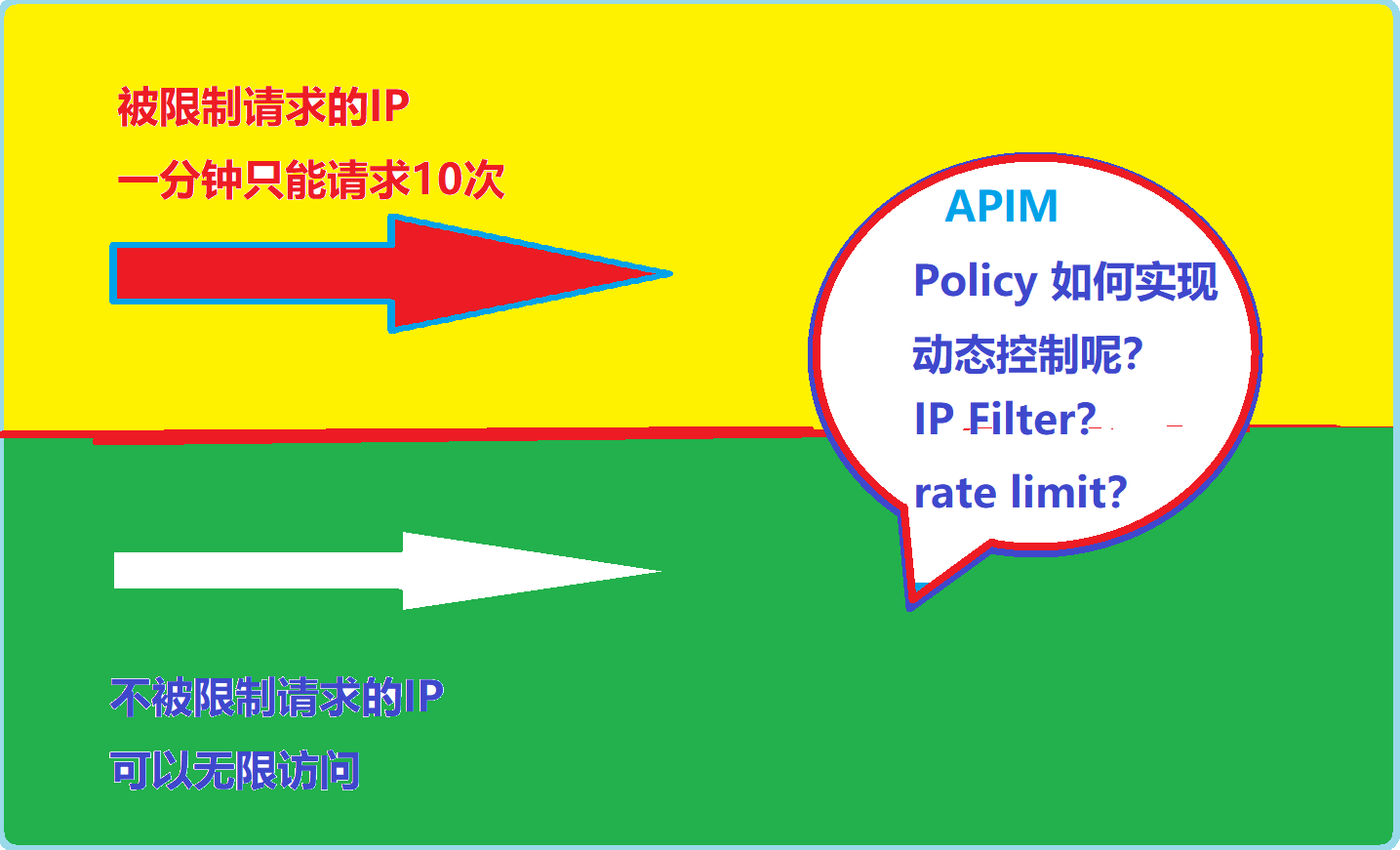
ChatGPT 解答
最近ChatGPT爆火,所以也把这个问题让ChatGPT来解答,然后人工验证它的回答正确与否?
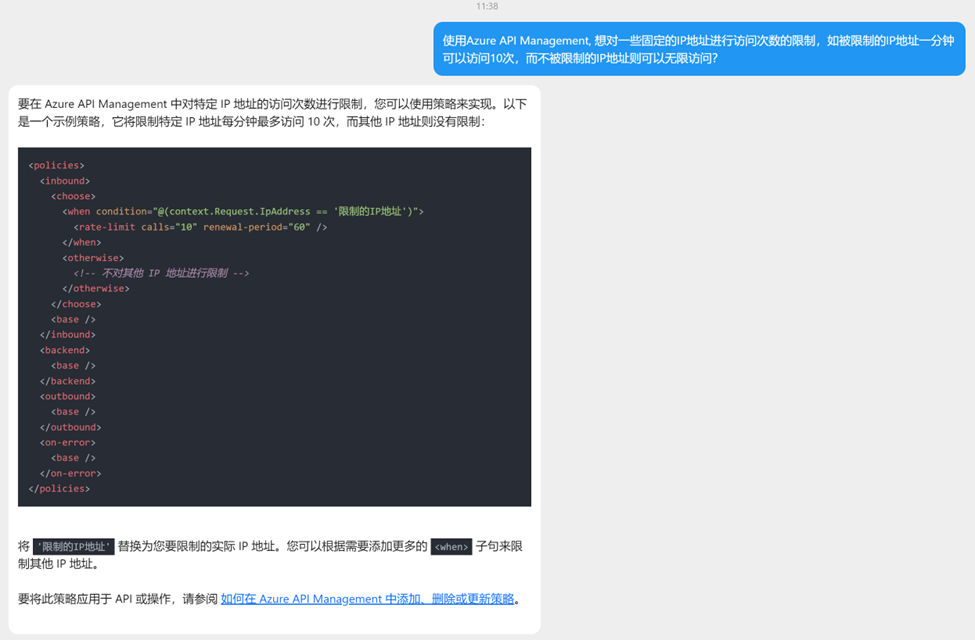
根据对APIM Policy的文档参考, choose 和 rate-limit 策略组合理论上的确可以实现要求, 接下来就让我们实际验证:
- choose策略:https://docs.azure.cn/zh-cn/api-management/api-management-advanced-policies#choose ,choose 策略根据布尔表达式的求值结果应用括住的策略语句,类似于编程语言中的 if-then-else 或开关构造。
- rate-limit策略:https://docs.azure.cn/zh-cn/api-management/api-management-access-restriction-policies#LimitCallRate , rate-limit 策略可以对调用速率进行限制,使每个指定时段的调用不超出指定的数目,避免单个订阅的 API 使用量暴增。 超过调用速率时,调用方会收到 429 Too Many Requests 响应状态代码。
验证步骤
1)在API的Inbound 策略中添加 choose策略
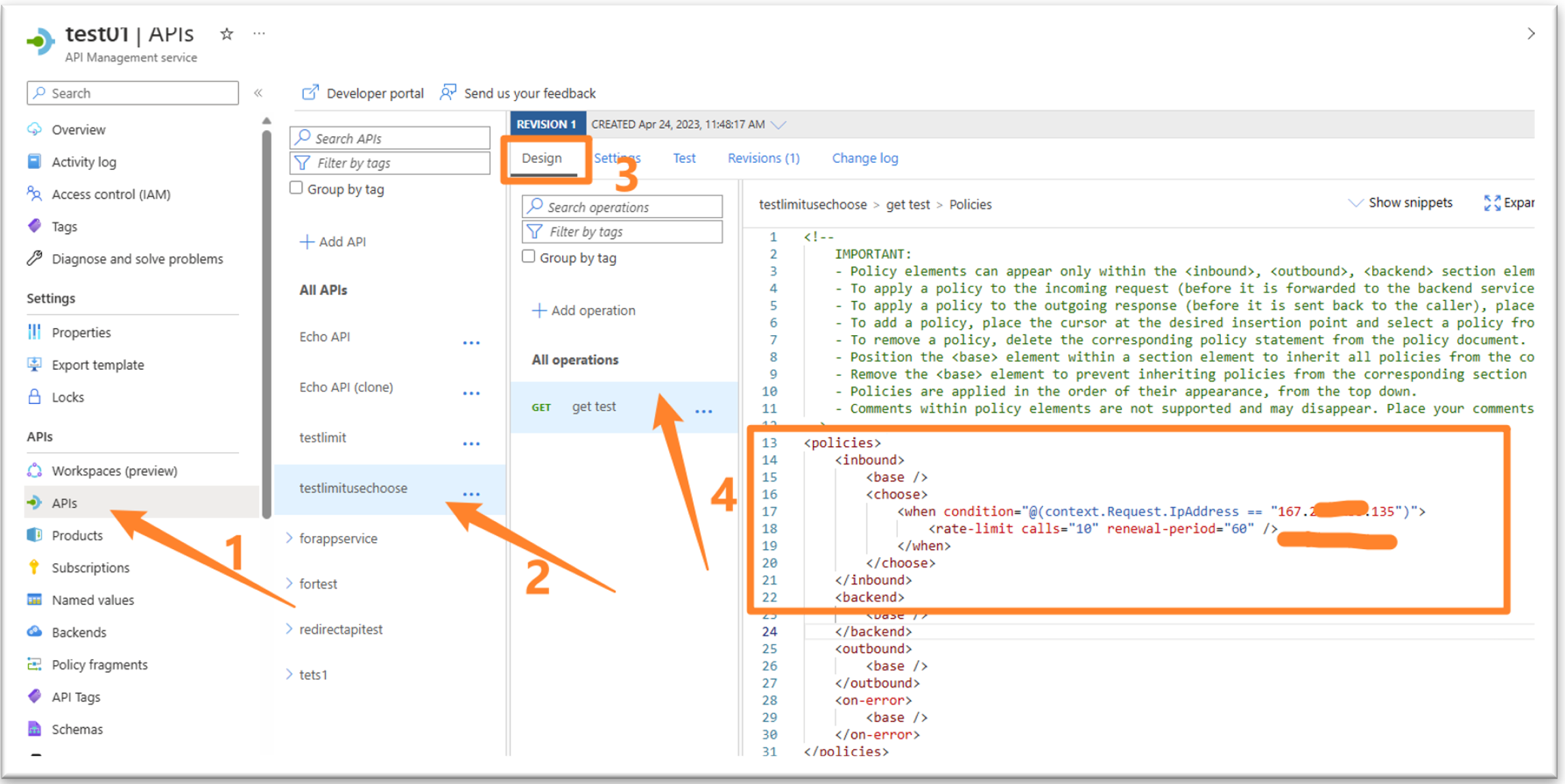
(策略具体内容,见文末)
2) 测试验证,连续对该API访问10次以上,得到429 Too Many Requests错误

3)以上证明,ChatGPT针对这个问题的解答是正确的!
工程师解答
在参考ChatGPT给出的 choose + rate limit 组合后,我们也发现另一个选项。使用 rate-limit-by-key 策略实现对特定IP的速率限制。
- rate-limit-by-key 策略:https://docs.azure.cn/zh-cn/api-management/api-management-access-restriction-policies#LimitCallRateByKey , 可以对调用速率进行限制,使指定时段的调用不超出指定的数目,避免单个密钥的 API 使用量暴增。 密钥的值可以是任意字符串,通常使用策略表达式来提供密钥。 可以添加可选增量条件,指定在决定是否到达限制值时应该进行计数的请求。 超过此调用速率时,调用方会收到
429 Too Many Requests响应状态代码。
在官方文档中给出的示例中,是针对所有的IP(context.Request.IpAddress)都进行了10次/60秒请求的限制,而本示例中则特指“某些固定IP”限制。那么如何来完成这个需求呢?
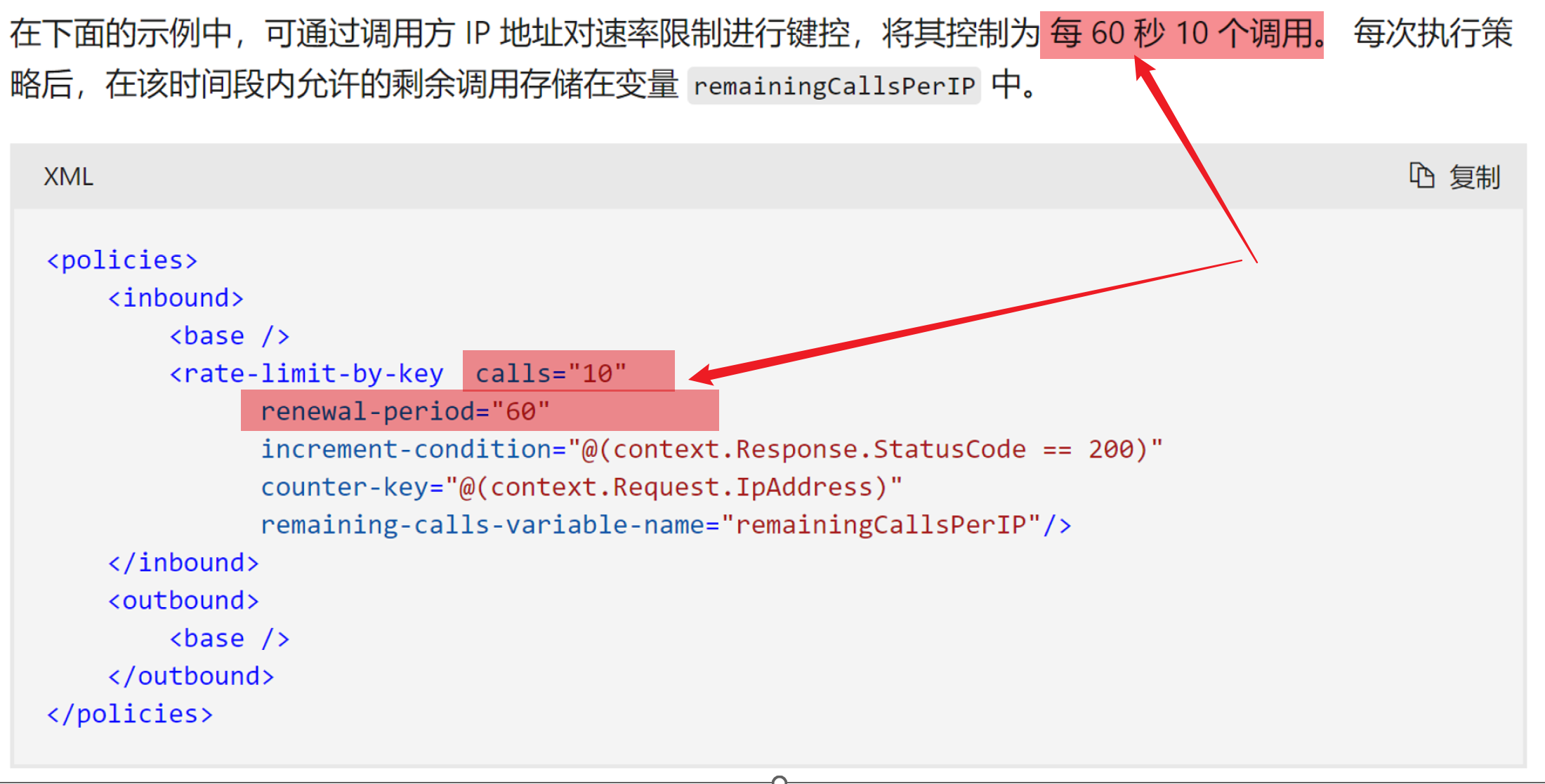
答案 就在“rate-limit-by-key 策略”的说明中,”可以添加可选增量条件,指定在决定是否到达限制值时应该进行计数的请求”, 所以,只要可选增量条件(increment-condition) 的值根据输入的IP地址动态赋值True/False, 就能完美匹配以上要求。
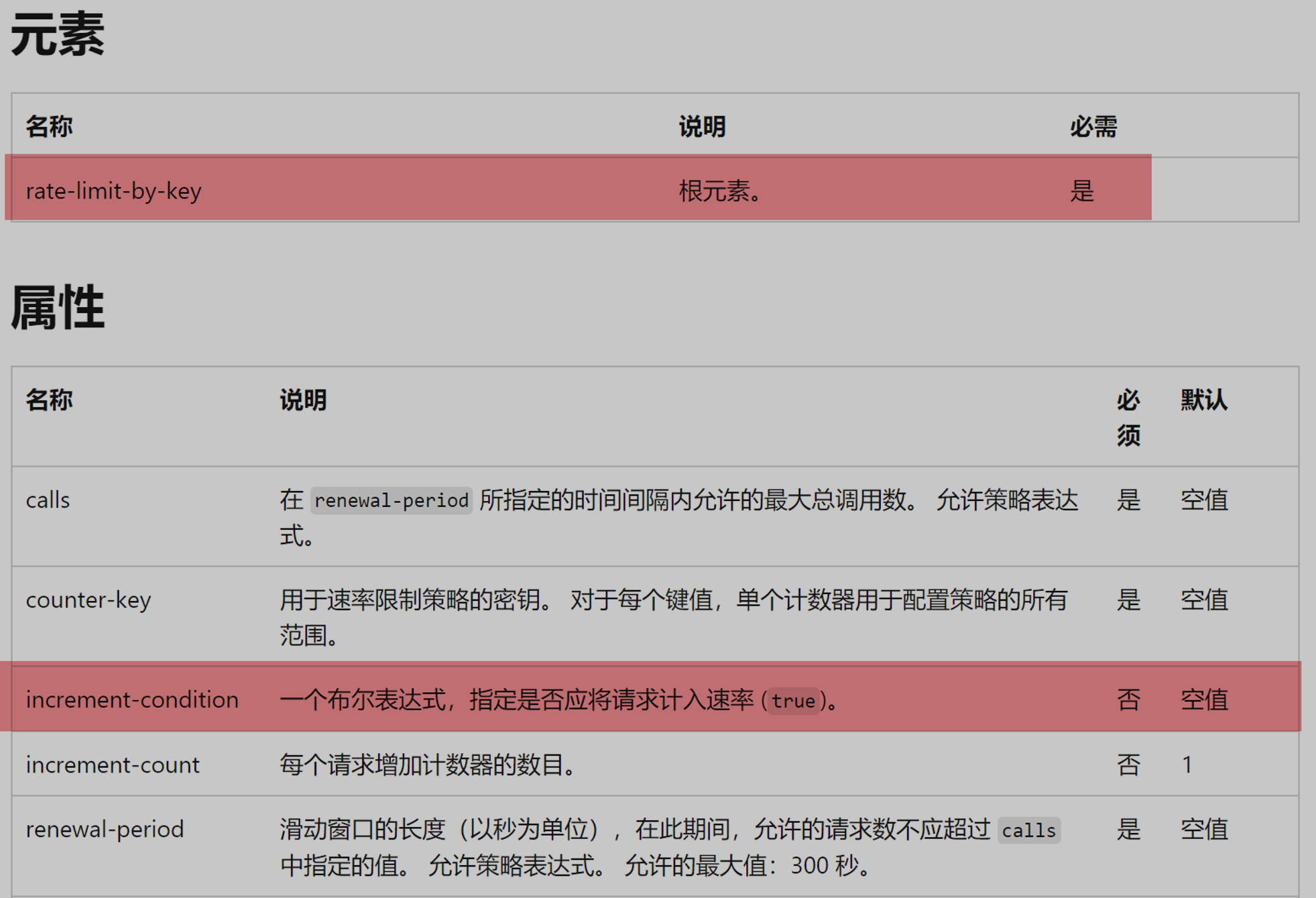
理论推断,只需要实现如下逻辑,即可以实现终极需求“想对一些固定的IP地址进行访问次数的限制,如被限制的IP地址一分钟可以访问10次,而不被限制的IP地址则可以无限访问?”
只需两步:
1)通过设置一个变量(set-variable) 值,用C#代码来计算变量值,在赋值语句中,预先定义一个IP限制列表,通过 contains 检查当前请求IP是否在列表中,返回True or False 。True表示当前请求的IP需要速率限制, 否则,不需要。
2) 然后,在rate-limit-by-key 的 increment-condition条件中使用上一步参数值,进行判断是否计入限制
验证步骤
1)在API的 Inbound 策略中添加 rate-limit-by-key策略

(策略具体内容,见文末)
2)验证在30秒,访问5次以上后,同样得到429 Too Many Requests错误

3) 当在请求Headers中添加Ocp-Apim-Trace: true 和 Ocp-Apim-Subscription-Key: {订阅Key}后,可以查看请求在APIM中执行的日志跟踪。可以查看rate-limit-by-key 策略的执行情况.
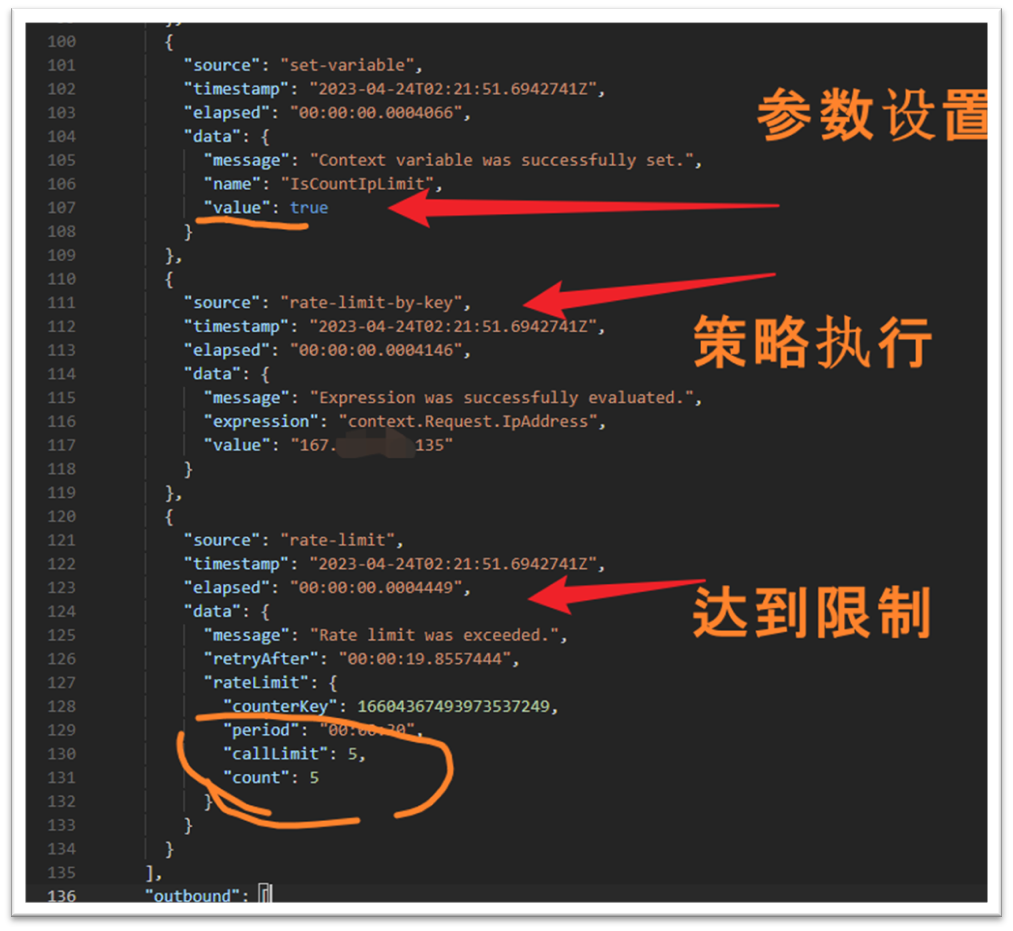
总结
想实现固定IP地址访问次数的限制,至少有如下两种解决方案。
方案一:Choose + rate-limit 策略组合
<!--
IMPORTANT:
- Policy elements can appear only within the <inbound>, <outbound>, <backend> section elements.
- To apply a policy to the incoming request (before it is forwarded to the backend service), place a corresponding policy element within the <inbound> section element.
- To apply a policy to the outgoing response (before it is sent back to the caller), place a corresponding policy element within the <outbound> section element.
- To add a policy, place the cursor at the desired insertion point and select a policy from the sidebar.
- To remove a policy, delete the corresponding policy statement from the policy document.
- Position the <base> element within a section element to inherit all policies from the corresponding section element in the enclosing scope.
- Remove the <base> element to prevent inheriting policies from the corresponding section element in the enclosing scope.
- Policies are applied in the order of their appearance, from the top down.
- Comments within policy elements are not supported and may disappear. Place your comments between policy elements or at a higher level scope.
-->
<policies>
<inbound>
<base />
<set-variable name="IsCountIpLimit" value="@{
string ipAddress =context.Request.IpAddress;
List<string> cidrList = new List<string>(){
"167.xxx. xxx.135",
"167.xxx. xxx.136",
"167.xxx. xxx.137"
};
return cidrList.Contains(ipAddress);
}" />
<choose>
<when condition="@((bool)context.Variables["IsCountIpLimit"])">
<rate-limit calls="10" renewal-period="60" />
</when>
</choose>
</inbound>
<backend>
<base />
</backend>
<outbound>
<base />
</outbound>
<on-error>
<base />
</on-error>
</policies>
方案二:rate-limit-by-key策略
<!--
IMPORTANT:
- Policy elements can appear only within the <inbound>, <outbound>, <backend> section elements.
- To apply a policy to the incoming request (before it is forwarded to the backend service), place a corresponding policy element within the <inbound> section element.
- To apply a policy to the outgoing response (before it is sent back to the caller), place a corresponding policy element within the <outbound> section element.
- To add a policy, place the cursor at the desired insertion point and select a policy from the sidebar.
- To remove a policy, delete the corresponding policy statement from the policy document.
- Position the <base> element within a section element to inherit all policies from the corresponding section element in the enclosing scope.
- Remove the <base> element to prevent inheriting policies from the corresponding section element in the enclosing scope.
- Policies are applied in the order of their appearance, from the top down.
- Comments within policy elements are not supported and may disappear. Place your comments between policy elements or at a higher level scope.
-->
<policies>
<inbound>
<base />
<set-variable name="IsCountIpLimit" value="@{
string ipAddress =context.Request.IpAddress;
List<string> limitIPs = new List<string>(){
"167.xxx. xxx.135",
"167.xxx. xxx.136",
"167.xxx. xxx.137"
};
return limitIPs.Contains(ipAddress);
}" />
<rate-limit-by-key calls="5" renewal-period="30" counter-key="@(context.Request.IpAddress)" increment-condition="@(context.Response.StatusCode >= 200 && context.Response.StatusCode < 300 && (bool)context.Variables["IsCountIpLimit"])" />
</inbound>
<backend>
<base />
</backend>
<outbound>
<base />
</outbound>
<on-error>
<base />
</on-error>
</policies>
参考资料
choose策略:https://docs.azure.cn/zh-cn/api-management/api-management-advanced-policies#choose
rate-limit策略:https://docs.azure.cn/zh-cn/api-management/api-management-access-restriction-policies#LimitCallRate ,
rate-limit-by-key 策略:https://docs.azure.cn/zh-cn/api-management/api-management-access-restriction-policies#LimitCallRateByKey
当在复杂的环境中面临问题,格物之道需:浊而静之徐清,安以动之徐生。 云中,恰是如此!
分类: 【Azure API 管理】
标签: rate-limit-by-key , Azure API 管理 , 429 Too Many Requests , 实现对部分固定IP进行访问次数 , Choose + rate limit
| 阿里云国内75折 回扣 微信号:monov8 |
| 阿里云国际,腾讯云国际,低至75折。AWS 93折 免费开户实名账号 代冲值 优惠多多 微信号:monov8 飞机:@monov6 |

